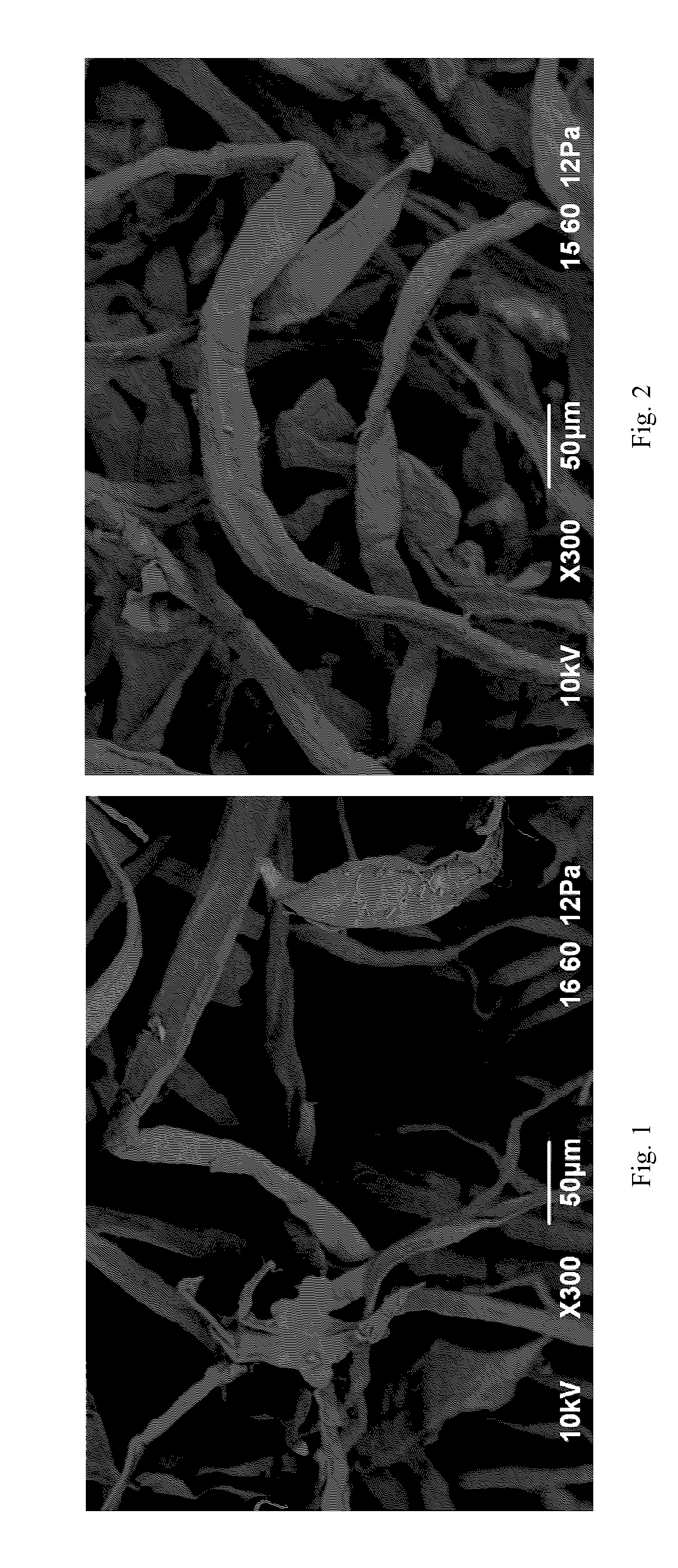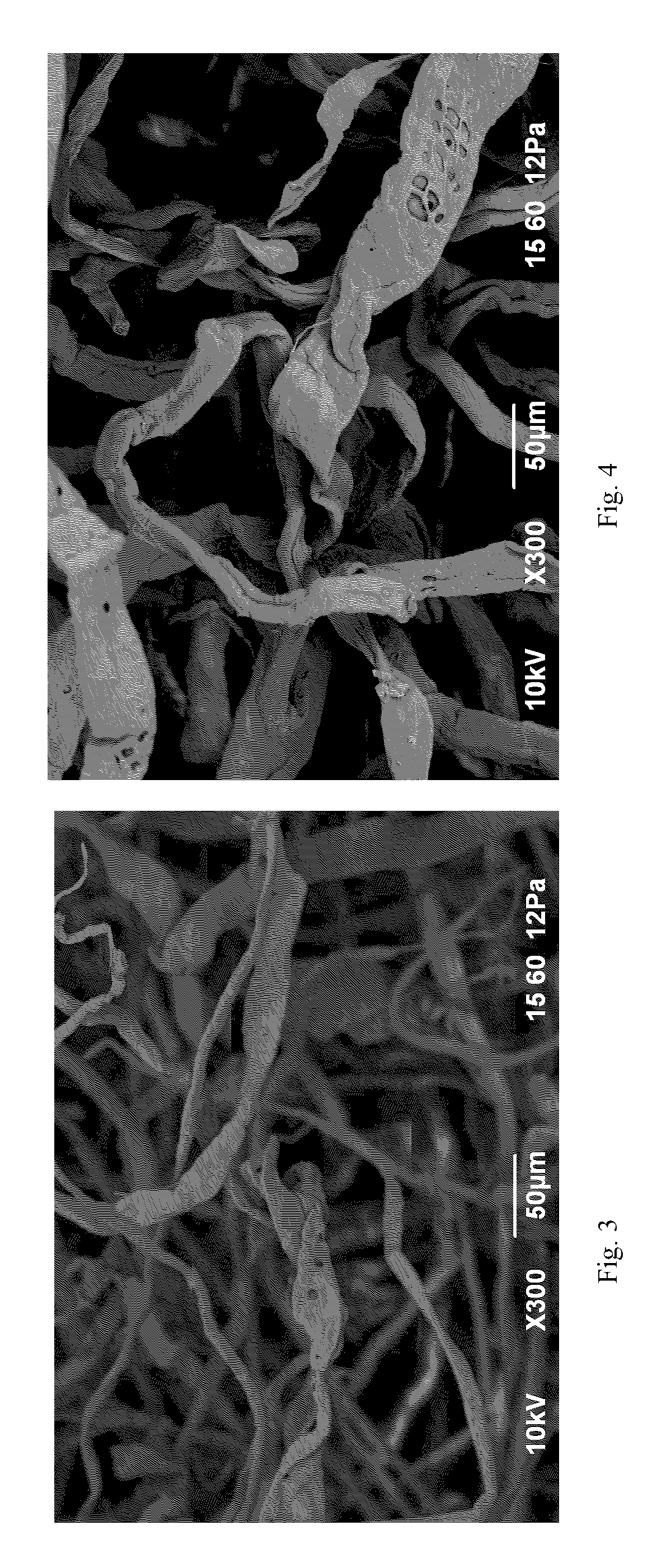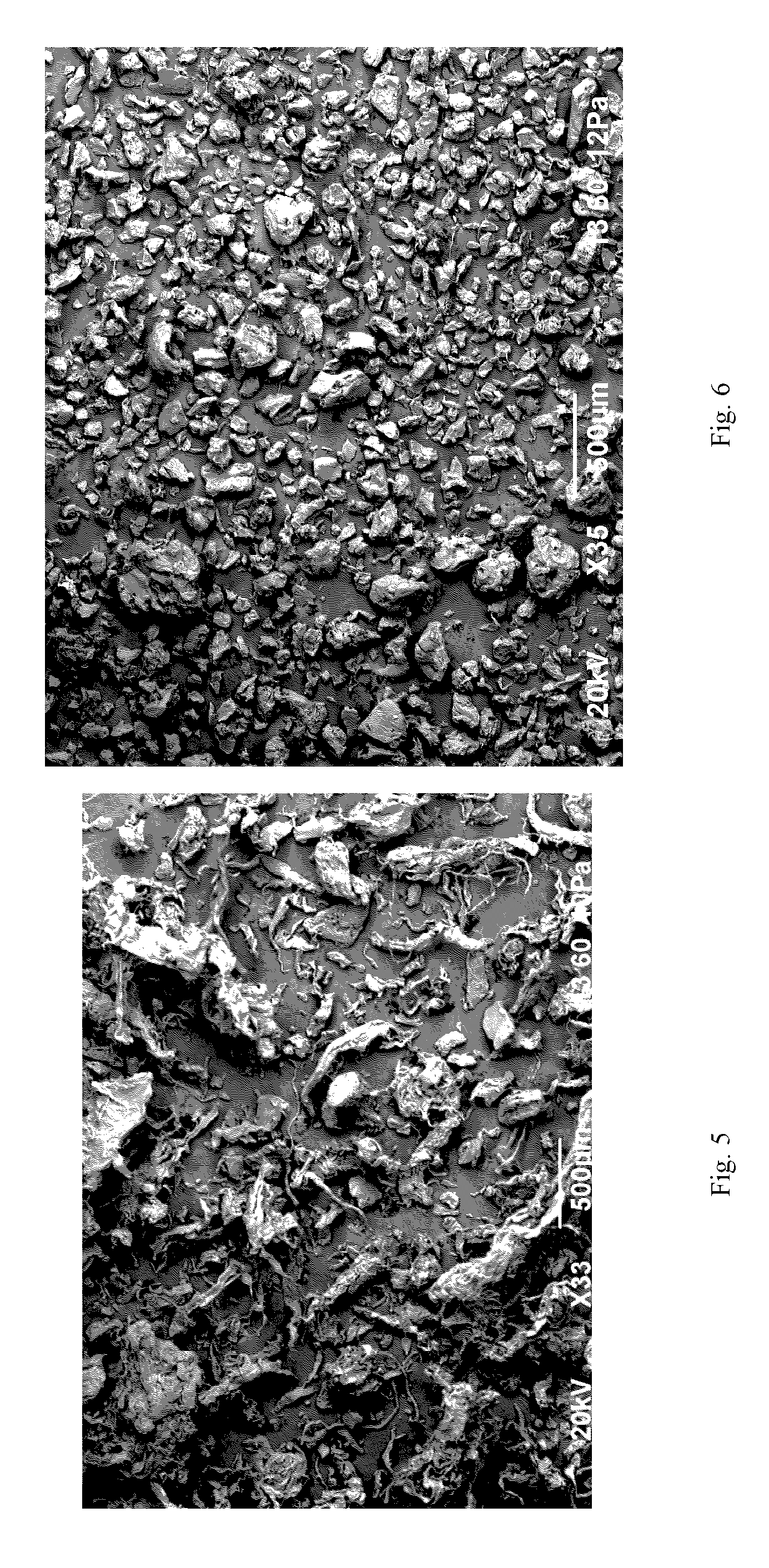Methods for removing hemicellulose
a technology of hemicellulose and cellulose, which is applied in the field of hemicellulose removal, can solve the problems of high cost of such pulps, incompatible with certain industrial uses, and inability to commercially obtain dmdo,
- Summary
- Abstract
- Description
- Claims
- Application Information
AI Technical Summary
Benefits of technology
Problems solved by technology
Method used
Image
Examples
example 1
[0080]A novel method using UV / Vis analysis method for fast determination of hemicellulose content in a sample was developed. Hemicellulose includes xylan, glucuronoxylan, arabinoxylan, glucomannan, galactomannan, and xyloglucan, while α-cellulose includes glucose. The UV / Vis analysis method is was based on the fact that under the pre-hydrolysis conditions xylan degrades to form 2-furfural and glucose degrades to form 5-hydroxymethyl-2-furfural. Because the rate of degradation of the monosaccharide is different, the difference in rate of formation of furfural compounds may be used as the fundamental basis for UV / Vis method.
[0081]The UV / Vis analysis method includes a first step of pre-hydrolyzing the sample in sulfuric acid (72 wt. %) for 60±2 min at 30° C. Depending on the concentration of xylan in the sample, 10 ml or 5 ml of deionized water were added to the pre-hydrolysis solution. The solution was then measured at 270 nm to 280 nm with a SHIMADZU UV / Vis spectrometer UV-2600. The ...
example 2
[0083]0.5 gram of paper grade pulp sample was weighed and put into a 75 ml glass vial with Teflon face lined cap. A pre-calculated amount of EMIM Ac and H2O (total) were added into the glass vial according to the predetermined extractant weight ratio (EMIM Ac / H2O) and mixed well with the pulp samples. The sample thus contained a solid / liquid ratio (S / L) of 1.25:100. The glass vials with pulp and extractant solution were placed into a NAPCO® Autoclave (Model 800-DSE autoclave), and the autoclave was set at 120° C. for 1 hr. After the autoclave treatment, the glass vial was left to cool to room temperature.
[0084]The content in the glass vial was transferred to a Büchner funnel with 5 μm twilled Dutch wire cloth filter pads and filtered under vacuum until less than one liquid drop came out of the funnel in a minute. The pulp formed a thin sheet of paper on the pads.
[0085]20 ml fresh DMSO solvent was added to the filter pads and were filtered under vacuum again until less than one liqui...
example 3
[0088]The results for the amount of hemicellulose in the paper pulp product using the above-described EMIM Ac / H2O binary extractant treatment are shown in Table 1. The absorbance of a commercially available hardwood acetate grade pulp was used as a bench mark. The absorbance of a hardwood paper grade pulp starting material was also measured and used as a comparison.
[0089]
TABLE 1EMIM Ac / H2O Binary Extractant on Hardwood Paper Grade PulpExtractant Composition by wt. %Absorbance at 277 nmAstracel ECF (Paper Grade Pulp)4.826without treatment30 EMIM Ac / 70 H2O4.67440 EMIM Ac / 60 H2O4.68750 EMIM Ac / 50 H2O4.57760 EMIM Ac / 40 H2O3.93070 EMIM Ac / 30 H2O2.19680 EMIM Ac / 20 H2O1.19290 EMIM Ac / 10 H2On / aCommercially Available0.887Acetate Grade Pulp (Benchmark)
[0090]As shown in Table 1, the use of over 50 wt. % water in the EMIM Ac / H2O binary extractant system appeared to have minimal effect in removing hemicellulose from the hardwood paper grade pulp, while the use of less than 20 wt. % water resulte...
PUM
| Property | Measurement | Unit |
|---|---|---|
| wt. % | aaaaa | aaaaa |
| temperature | aaaaa | aaaaa |
| wt. % | aaaaa | aaaaa |
Abstract
Description
Claims
Application Information
 Login to View More
Login to View More - R&D
- Intellectual Property
- Life Sciences
- Materials
- Tech Scout
- Unparalleled Data Quality
- Higher Quality Content
- 60% Fewer Hallucinations
Browse by: Latest US Patents, China's latest patents, Technical Efficacy Thesaurus, Application Domain, Technology Topic, Popular Technical Reports.
© 2025 PatSnap. All rights reserved.Legal|Privacy policy|Modern Slavery Act Transparency Statement|Sitemap|About US| Contact US: help@patsnap.com



